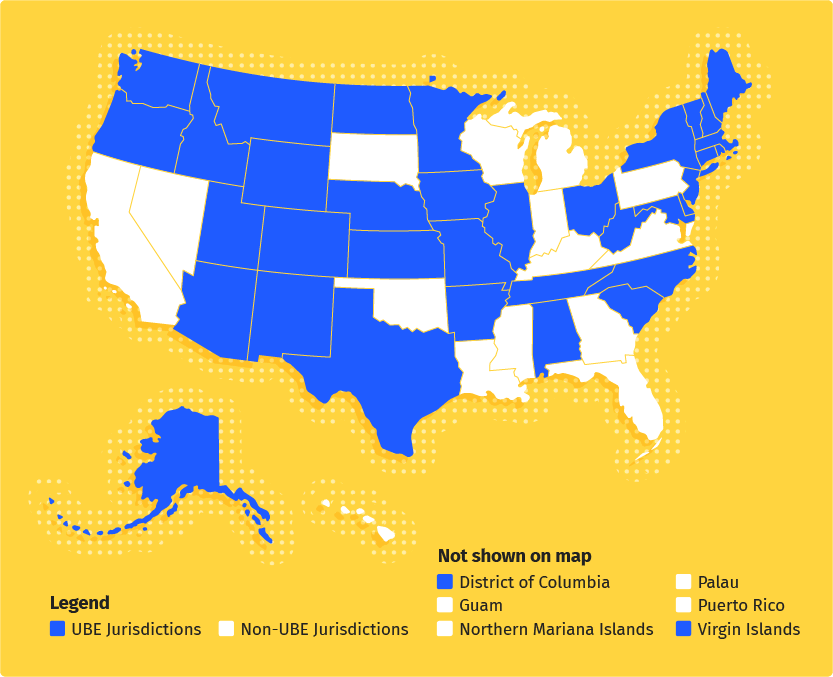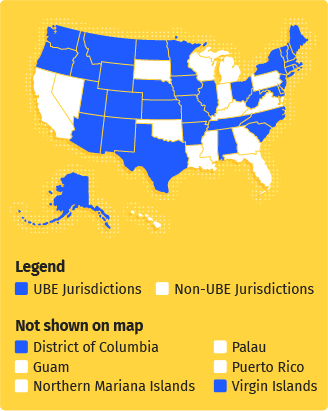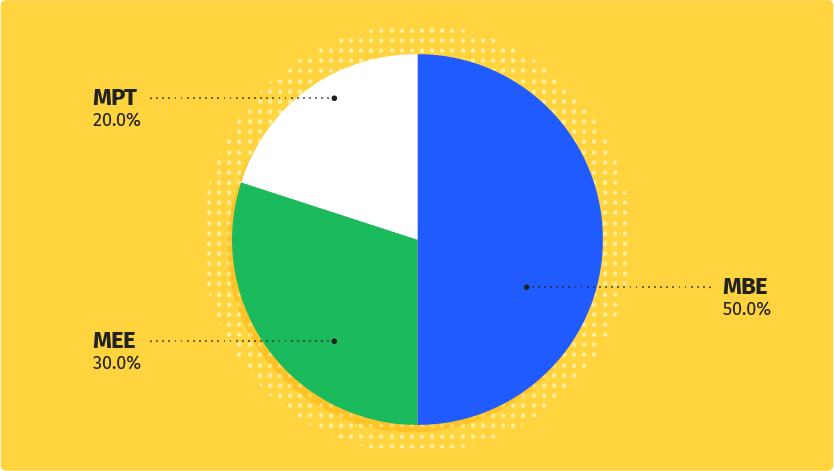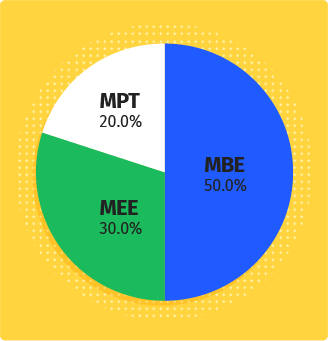UBE States: Which States Have Adopted the Uniform Bar Exam?
 By Andrei Zakhareuski, BarPrepHero, Founder/CEO
By Andrei Zakhareuski, BarPrepHero, Founder/CEO
More help for you


The Uniform Bar Examination (UBE) is a standardized bar exam that tests on “majority law” since it is national, compared to state specific tests that test on state specific laws. There is concern that the UBE is creating underprepared lawyers, but with new states adopting it each year, it appears to have its positives as a way to practice law in any state desired.
Learn about the UBE and if your state is a “UBE state, meaning it has adopted it, below.
What is the Uniform Bar Examination (UBE)?
The Uniform Bar Examination (UBE) is a test that was created by and is coordinated by the National Conference of Bar Examiners (NCBE). The exam can be transferred across states that have UBE jurisdictions, because it is administered, graded, and cored uniformly. Hence the name, Uniform Bar Examination.
Keep in mind that each jurisdiction has its own requirements in regards to additional exams, passing scores, and more. Learn about your state’s requirements below:
What Does it Test?
The UBE is comprised of three sections. These include the Multistate Bar Examination (MBE), the Multistate Essay Examination (MEE), and the Multistate Performance Test (MPT) which is made up of two 90 minute tasks.
Out of each of the three exam types, an examinee can expect to be tested on:
- Business Associations
- Contracts and Sales
- Constitutional Law
- Criminal Law and Procedure
- Civil Procedure
- Conflict of Laws
- Evidence
- Family Law
- Real Property
- Torts
- Trusts and Estates
- Uniform Commercial Code
The MBE is administered on the last Wednesday of February and July each year. While the MEE and MPT are administered on the Tuesday before the MBE takes place. Total UBE scores are reported on a 400-point scale, and each component is weighted as follows:
How is it Weighted?


- Multistate Bar Examination (MBE) -- 50%
- Multistate Essay Examination (MEE) -- 30%
- Multistate Performance Test (MPT) -- 20%
States Where it is Adopted
There are 36 states or jurisdictions in America that have adopted the UBE. These UBE states include:
- Alabama
- Alaska
- Arizona
- Arkansas
- Colorado
- Connecticut
- District of Columbia
- Idaho
- Illinois
- Indiana
- Iowa
- Kansas
- Kentucky
- Maine
- Maryland
- Massachusetts
- Michigan
- Minnesota
- Missouri
- Montana
- Nebraska
- New Hampshire
- New Jersey
- New Mexico
- New York
- North Carolina
- North Dakota
- Ohio
- Oklahoma
- Oregon
- Pennsylvania
- Rhode Island
- South Carolina
- Tennessee
- Texas
- Utah
- Vermont
- Washington
- West Virginia
- Wyoming
- Virgin Islands
Each year, more states are trending towards adopting the UBE. With more states getting on board, this makes it easier for examinees to transfer their scores to other UBE jurisdictions and practice.
If you need help practicing for the different parts of the UBE, whether that be the MBE, MEE, or MPT, we’ve got you covered!

